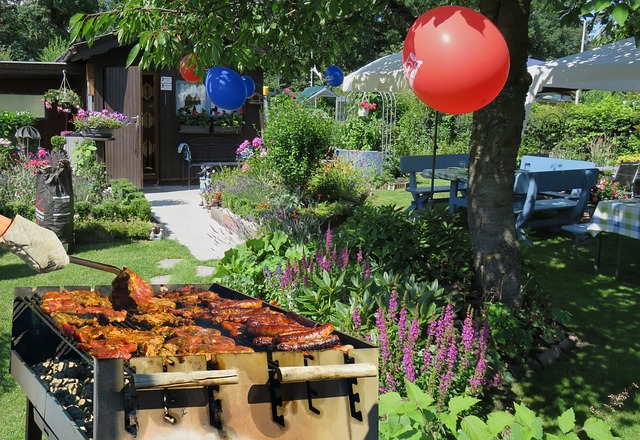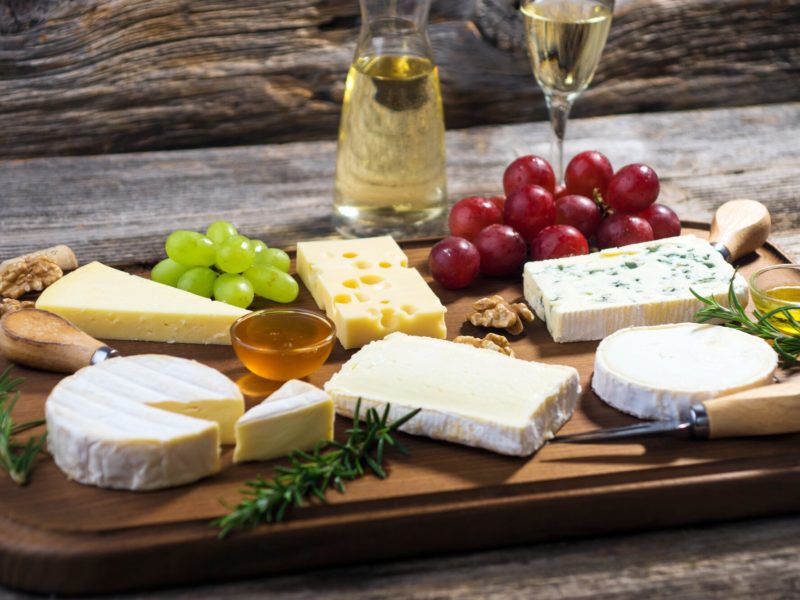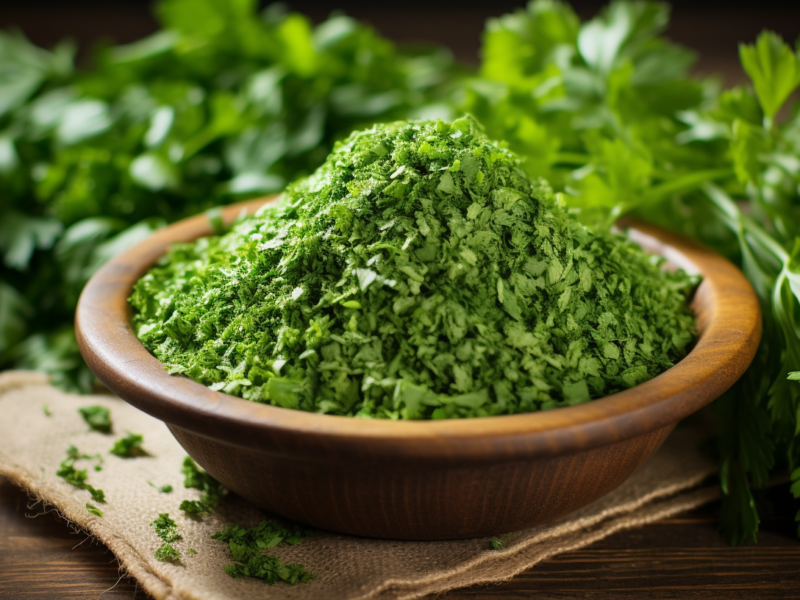Outdoor cooking with cast iron is a timeless tradition that combines the best of both worlds – the simplicity of connecting with nature and the art of preparing mouthwatering dishes.
As more people rediscover the joy of escaping the confines of their kitchens and venturing out into the great outdoors, the allure of cooking on an open flame has only grown stronger.
In this comprehensive guide, we will delve into the world of outdoor cooking with cast iron cookware and explore why it’s the ultimate companion for your culinary adventures.
We’ll discuss the unique advantages of cast iron for outdoor feasts, from its unparalleled durability to its ability to enhance flavors. We’ll also cover the essential tools you need for creating scrumptious meals al fresco, as well as tips and techniques for getting the most out of your trusty cast iron cookware.
And, of course, no guide would be complete without a selection of delectable recipes to inspire your next outing.
Why Choose Cast Iron for Outdoor Cooking
Before diving into the specifics, let’s briefly discuss why cast iron cookware is a great choice for outdoor cooking.
From its durability to its exceptional heat retention, there are plenty of reasons to opt for cast iron when preparing meals al fresco.
Durability and Versatility
When it comes to outdoor cooking, you need cookware that can withstand the elements and the test of time.
Cast iron is a famously sturdy and long-lasting material, meaning your cookware will be able to endure the challenges of cooking in the great outdoors.
Not only is cast iron tough, but it’s also incredibly versatile. From simmering stews to grilling steaks and baking bread, you’ll find that your cast iron cookware can handle it all with ease.
Heat Retention and Distribution
One of the most remarkable properties of cast iron is its excellent heat retention and distribution.
This means that once heated, cast iron will hold onto that heat and distribute it evenly across the cooking surface, ensuring consistent cooking results.
This feature is critical when cooking outdoors, where temperature control can be tricky. Cast iron will help you maintain a steady cooking temperature, making your outdoor culinary adventures more enjoyable and successful.
Natural Non-Stick Surface
With proper care and seasoning, cast iron cookware develops a natural non-stick surface perfect for outdoor cooking.
This makes cooking easier and simplifies the cleaning process, which is always a plus when you’re away from the convenience of a fully equipped kitchen.
Plus, unlike synthetic non-stick coatings, the seasoned surface of cast iron is chemical-free and only gets better with time and use.
Flavor Enhancement
There’s something undeniably special about the taste of food cooked in cast iron cookware. Many people believe cast iron imparts a unique depth of flavor to dishes that just can’t be replicated with other materials.
The more you use your cast iron cookware, the more it gets seasoned, which adds a rich, savory taste to your meals. When you combine this with the smoky, earthy flavors of outdoor cooking, you’re in for a truly unforgettable dining experience.
Essential Cast Iron Cookware for Outdoor Cooking
Now that we’ve covered why cast iron is the ideal choice for outdoor cooking, let’s explore the essential cast iron items you’ll want to have in your outdoor kitchen arsenal:
Skillets and Cast Iron Pans
A cast iron skillet or cast iron pan is a must-have item for any outdoor cooking enthusiast. These versatile tools are perfect for whipping up everything from fluffy scrambled eggs and crispy bacon in the morning to seared steaks and sautéed vegetables in the evening.
Cast iron skillets come in various sizes, so you can choose one that best suits your needs, whether you’re cooking for yourself or a large group.
Dutch Ovens
Dutch ovens are a staple of outdoor cooking, and for a good reason. These sturdy, lidded cast iron pots are designed to retain heat and moisture, making them ideal for slow-cooking dishes like soups, stews, and chili. They’re also great for baking bread, cobblers, and other delicious treats.
When cooking outdoors, look for a Dutch oven with legs and a flanged lid, as these features allow you to cook with coals and manage heat more effectively.
Enameled Dutch ovens are another great option for those who prefer the convenience of easy-to-clean cookware without sacrificing cooking performance.
Griddles and Grill Pans
Expand your outdoor cooking repertoire with a cast iron griddle or grill pan. These flat, rectangular cookware pieces provide a large cooking surface perfect for pancakes, hash browns, or even grilled sandwiches.
Grill pans feature raised ridges, allowing you to get those beautiful grill marks on your food while allowing excess fat to drip away. They’re great for cooking burgers, fish, and vegetables, adding a delightful charred flavor to your dishes.
Campfire Tripods and Cooking Sets
While not made of cast iron themselves, campfire tripods and cast iron cooking sets are essential accessories for outdoor cooking enthusiasts. These items help you set up your cast iron cookware over an open flame, providing stability and control.
A campfire tripod typically has an adjustable chain and hook, allowing you to raise or lower your cookware to control the heat.
Cast iron cooking sets often include a tripod, a grill grate, and a variety of cast iron pieces, such as a skillet, a Dutch oven, and a griddle, making them an all-in-one solution for your outdoor culinary adventures.
Prepping Your Cast Iron Cookware for Outdoor Use
Before you start cooking up a storm outdoors, it’s essential to properly prepare your cast iron cookware for the unique challenges of al fresco cooking.
Let’s discuss how to season, clean, and maintain your cast iron cookware to ensure it’s ready for outdoor culinary adventures.
Seasoning Your Cast Iron Cookware
Before you head out into the wilderness with your cast iron cookware, it’s important to ensure it’s properly seasoned.
Seasoning is the process of applying a thin layer of oil to the cookware’s surface and heating it to create a protective, non-stick coating. To season your cast iron, follow these simple steps:
- Clean your cookware thoroughly, removing any dirt, dust, or residue.
- Dry it thoroughly with a clean cloth or paper towel.
- Apply a thin layer of oil (such as vegetable oil, flaxseed oil, or canola oil) to the entire surface, including the handle and the exterior.
- Place the cookware upside down in a preheated oven or grill at around 400°F (205°C) for one hour.
- Let it cool down before storing or using it.
Repeat this process as needed to maintain a well-seasoned surface. Properly seasoned cast iron will have a shiny, smooth appearance and will be more resistant to rust and sticking.
Proper Cleaning and Storage
Keeping your cast iron clean is crucial for maintaining its seasoning and performance.
After each use, clean your cookware by wiping it with a paper towel or a soft cloth to remove food particles. If necessary, use warm water and a gentle brush or sponge to clean stubborn residue. Avoid using soap or harsh cleaning agents, as they can strip away the seasoning.
Once your cookware is clean, dry it completely to prevent rust formation. You can do this by placing it over low heat or using a clean cloth or paper towel. Before storing your cast iron cookware, apply a light layer of oil to the surface to keep it protected and well-seasoned.
Tips for Maintaining a Well-Seasoned Surface
A well-seasoned cast iron surface is the key to successful outdoor cooking. To maintain the seasoning on your cookware, follow these tips:
- Use your cast iron cookware regularly, as frequent use helps to build up and maintain the seasoning.
- Avoid cooking highly acidic or alkaline foods, such as tomato sauces or vinegar-based dishes, as these can break down the seasoning.
- When cooking outdoors, control the heat to prevent your cookware from getting too hot, as excessive heat can damage the seasoning.
- Re-season your cast iron cookware as needed to keep it in top condition and ready for your next outdoor cooking adventure.
Popular Outdoor Cooking Techniques with Cast Iron
Cast iron cookware is incredibly versatile, making it well-suited for various outdoor cooking techniques. Here are some of the most popular methods for using cast iron in your outdoor cooking endeavors:
Grilling
Grilling is one of the most popular outdoor cooking techniques, and cast iron cookware excels in this department. You can achieve beautiful grill marks and a smoky flavor on your food using a cast iron grill pan or griddle.
Start by preheating cast iron cookware over an open flame or on a grill grate, then add your seasoned ingredients and cook until they reach the desired level of doneness.
Cast iron’s excellent heat retention ensures an even and consistent cooking process, perfect for grilling meats, fish, and vegetables.
Roasting
Roasting is another favorite technique for outdoor cooking with cast iron. To roast ingredients in your cast iron skillet or Dutch oven, simply preheat your cookware, then add your ingredients and a small amount of oil or fat.
Cook over an open flame or on a grill grate, occasionally stirring to ensure even cooking. This technique works well for various ingredients, including vegetables, meats, and even fruit, for a deliciously caramelized dessert.
Baking
You might not associate baking with outdoor cooking, but cast iron cookware makes it entirely possible. A cast iron Dutch oven is particularly well-suited for baking bread, cakes, and cobblers, as its heavy lid helps trap heat and moisture, creating a mini oven-like environment.
To bake with a Dutch oven, preheat it over an open flame or grill grate, then carefully add your batter or dough. Replace the lid and arrange hot coals on top to ensure even heat distribution from both the top and bottom.
Stewing and Simmering
Slow-cooked dishes, like stews and braises, are a fantastic option for outdoor cooking with cast iron. The even heat distribution and excellent heat retention properties of cast iron Dutch ovens make them perfect for this type of cooking, sometimes called Dutch oven cooking.
To prepare a stew or braise, sear your meat and vegetables in the Dutch oven, then add your liquids and other ingredients.
Place the lid on the Dutch oven and let the dish simmer gently over low heat, occasionally stirring until the ingredients are tender and the flavors have melded together.
Campfire Cooking
Finally, cast iron cookware is the ideal choice for traditional campfire cooking. Whether you’re using a skillet, Dutch oven, or griddle, cast iron can handle the intense heat of a campfire without warping or becoming damaged.
To cook over a campfire, suspend your cast iron cookware from a tripod or place it on a grill grate over the fire. Be sure to monitor the heat carefully, as campfires can be unpredictable, and use long-handled utensils to handle your cookware safely.
With some practice, you’ll be able to master the art of campfire cooking using your trusty cast iron cookware.
Safety Tips for Outdoor Cooking with Cast Iron
No matter how delicious your outdoor meals may be, safety should always be a top priority when cooking with cast iron and dealing with open fire.
Handling Hot Cast Iron Cookware
One of the most important aspects of outdoor cooking with cast iron is safely handling your hot cookware. Cast iron gets extremely hot during cooking and retains that heat for a long time.
Always use heat-resistant gloves or potholders when handling hot cast iron to avoid burns and accidents. Using long-handled utensils, like tongs and spatulas, is also a good idea to maintain a safe distance from the heat source while cooking.
Preventing Accidents and Injuries
Outdoor cooking can be unpredictable, so taking precautions to prevent accidents and injuries is essential. Always set up your cooking area on a stable, flat surface to avoid tipping over your cookware or spilling hot food.
Keep children and pets away from the cooking area, as they might inadvertently knock over your cookware or come into contact with hot surfaces.
In addition, be mindful of your surroundings and avoid cooking near flammable materials like dry leaves, branches, or tents.
Ensuring Food Safety
When cooking outdoors, following proper food safety guidelines is important to prevent foodborne illness. Keep perishable ingredients like meat, poultry, and dairy products chilled until you’re ready to cook them, and use a cooler with ice packs to maintain a safe temperature.
Always wash your hands and utensils before and after handling raw meat or poultry, and avoid cross-contamination by using separate cutting boards and utensils for raw and cooked foods.
Lastly, be sure to cook your food to the appropriate internal temperature, using a food thermometer to check for doneness.
5 Mouthwatering Cast Iron Recipes You Should Try
Now that you’re familiar with the essential cookware and techniques for outdoor cooking with cast iron, it’s time to explore some delicious recipes that showcase the versatility of this incredible cookware. Some of our favorites include:
Skillet Breakfast Hash
Start your day off right with a hearty breakfast hash cooked in your cast iron skillet. Sauté diced potatoes, onions, and bell peppers until tender and golden, then add cooked bacon or sausage and season with salt, pepper, and paprika.
Make wells in the hash and crack eggs into them, then cover and cook until the eggs are set to your desired doneness.
Campfire Chili
A warm, comforting bowl of chili is the perfect meal for an outdoor adventure. In your Dutch oven, brown ground beef or turkey, then add chopped onions, garlic, and bell peppers.
Stir in canned tomatoes, beans, and your favorite chili spices, and let it simmer over the campfire until the flavors meld together and the chili thickens.
Grilled Veggie Fajitas
Try grilled veggie fajitas on your cast iron grill pan for a delicious and healthy meal. Slice bell peppers, onions, and zucchini, then toss them in olive oil and fajita seasoning.
Cook the vegetables on the grill pan until they’re tender and slightly charred. Serve with warm tortillas, avocado, and a squeeze of lime.
Dutch Oven Peach Cobbler
Satisfy your sweet tooth with a delicious peach cobbler baked in your cast iron Dutch oven. Layer canned or fresh sliced peaches on the bottom of the Dutch oven and sprinkle with sugar and cinnamon.
Top with a simple cobbler batter made from flour, sugar, baking powder, milk, and melted butter. Bake over the campfire, with coals on the lid, until the cobbler is golden and bubbly.
One-Pan Campfire Nachos
For a fun and easy-to-make snack or meal, whip up a batch of one-pan campfire nachos in your cast iron skillet.
Layer tortilla chips, shredded cheese, black beans, diced tomatoes, and jalapeños in the skillet, then cover and cook over low heat until the cheese melts and gets bubbly. For a tasty and satisfying treat, top with sour cream, guacamole, and salsa.
Bottom line
In conclusion, outdoor cooking with cast iron is a fantastic way to expand your culinary horizons and make the most of your time in nature.
Cast iron cookware offers unparalleled versatility, allowing you to cook various dishes using various techniques. From grilling and roasting to baking and simmering, you’ll be amazed at the delicious meals you can create.
Proper care and maintenance will make your cast iron cookware a trusted companion on outdoor adventures.


